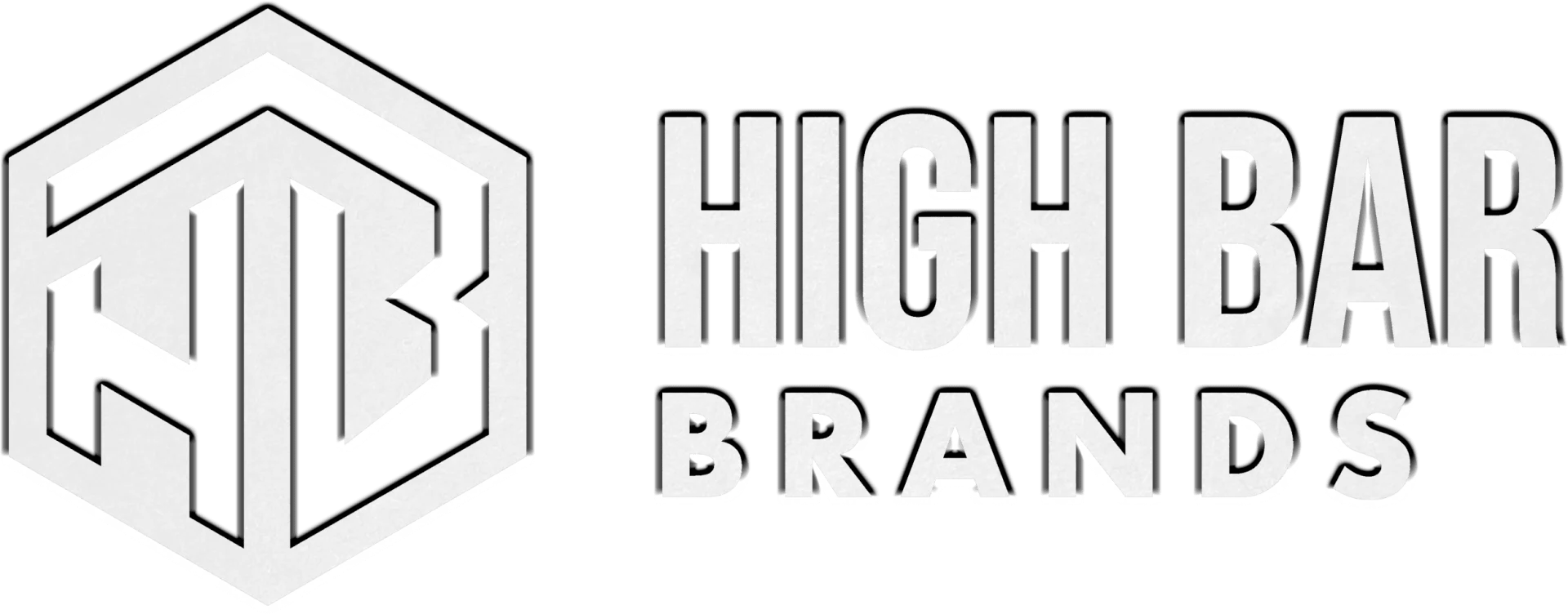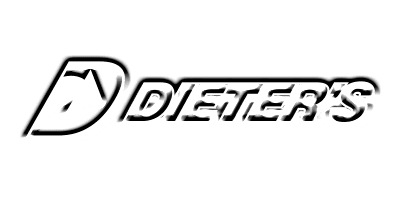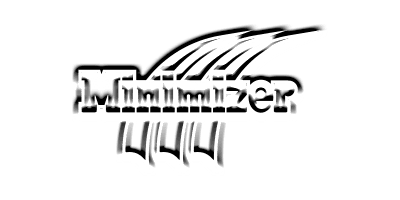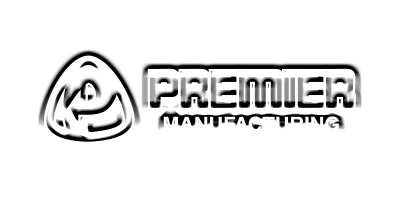
Coupling Component Selection
- What factors go into selecting the proper coupling components?
- There are four factors that go into selecting the proper coupling components:
- Determine the gross trailer(s) weight (GVWR)
- Determine the tongue weight capacity
- Consider operating conditions and environments
- Personal preference
- There are four factors that go into selecting the proper coupling components:
- How do you determine the gross trailer(s) weight (GVWR?
- Gross Trailer (s) Weight” is usually determined by the Gross Vehicle Weight Rating (GVWR). This information is attached to the trailer(s) by the manufacture.
- Note: Safety Chain Hangers – Must have ultimate strength of no less than the MGTW
- Gross Trailer (s) Weight” is usually determined by the Gross Vehicle Weight Rating (GVWR). This information is attached to the trailer(s) by the manufacture.
- How do you determine the tongue weight capacity?
- “Tongue Weight Capacity” is the maximum expected weight at the drawbar eye.
- Note: Hinged Drawbar – Maximum weight is half of drawbar weight. Non-hinged Drawbar – Weight is not known. Multiply the GVWR of towed trailer by 15%. Best Practice – Weight tongue when trailer is loaded to GVWR
- “Tongue Weight Capacity” is the maximum expected weight at the drawbar eye.
- What if I operate under rough conditions?
- Typically, you will want to increase Gross Trailer Weight & Tongue Weight Capacity by a minimum of 25%. This same practice applies to safety chain brackets.
- What is the difference between static and dynamic force?
- A static load is just that, static. A 2000 lbs. body exerts 2000 lbs. of force on whatever it is sitting on. Dynamic forces factor in kinetic energy. Depend greatly on the operating environment. For example, 2000 lbs. weight traveling at 30 mph – kinetic energy equates to 60113 ft.-lbs.
- What are some of the personal preferences I can make when selecting my equipment?
- First, you can choose from Premier’s premium features such as Saf-tite or Premalloy, Extended Life and Saf-T-Latch. Other choices include latch style, mounting bolt hole pattern, slack reducing feature, weld-on or bolt on drawbar eye, rubber or poly bushings, and either swivel or stationary eyes,
- What is Saf-Tite?
- Saf-Tite couplings/pintle hitches are unsurpassed in their Maximum Gross Trailer Weight capacities. They have easy to operate latch systems with polymer pivot points. When you want value, you’ll see that these quality couplings/pintle hitches are available to you at a savings – compare the costs. Our material is simply stronger. The difference is evident when you compare the capacities of these high strength couplings/pintle hitches against competing models.
- What is Premalloy?
- Premalloy is Premier Mfg’s own specially designed, proprietary material. The composition was created to handle applications that are rougher and abrasive in nature. This material is unique in its ability to work-harden at the contract surface. As the product is used, it is creating a hard outer shell and reducing wear. This is great for off-road and aggregate type applications that quickly reduce material in the wear areas. Premalloy will last significantly longer.
- What is Extended Life?
- This unique latch was engineered to deliver lubrication in a new way to your latch component parts. The Extended Life (EL) design provides a direct injection of lubrication to the latch pivot points. The result is a smooth, consistent latch performance over an extended period of time.
- What is Saf-T-Latch
- This one-of-a-kind latch closes with the release of the air brakes acting as a fail-safe when the person making the coupling fails to correctly connect the latch prior to moving the vehicle. Saf-T-Latch incorporates Extended life technology with a direct injection of lubrication to the latch pivot points. The result is a smooth consistent latch performance over an extended period of time with patented technology incorporated to ensure latch closure. Find out more about this incredible product at https://www.premier-mfg.com/product/820ela/
Couplings / Pintle Hitches
- Why should I choose Premier over their competition?
- Premier Manufacturing has been the leader in pintle hitch production since 1924. Company founder Dewey Weiss created the first pintle hook, laying the foundation for Premier innovation. In the late 1950’s, Premier engineers developed the slack reducing system, which reduces wear on the pintle hook and drawbar eye. Today, Premier produces the most widely-used hitch amongst LTL carriers and vocational haulers.
- Does Premier only have pintle hitches for the Heavy-Duty Trucks?
- No, Premier Mfg. has couplings / pintle hitches for the heavy duty (>70,000 lbs) market as well as medium duty (30,000-70,000 lbs) and light duty (<30,000 lbs) applications.
- What is the Warranty on Premier’s hitches?
- We warrant all Premier products to be free from defects in material or workmanship for one year. We will repair or replace, at our option, any Premier product which our examination reveals to be defective, provided that the product is returned to our factory in Tualatin, OR, transportation prepaid, within one year of purchase by the first retail purchaser.
- What is Saf-Tite?
- Saf-Tite couplings/pintle hitches are unsurpassed in their Maximum Gross Trailer Weight capacities. They have easy to operate latch systems with polymer pivot points. When you want value, you’ll see that these quality couplings/pintle hitches are available to you at a savings – compare the costs. Our material is simply stronger. The difference is evident when you compare the capacities of these high strength couplings/pintle hitches against competing models.
- What is Premalloy?
- Premalloy is Premier Mfg’s own specially designed, proprietary material. The composition was created to handle applications that are rougher and abrasive in nature. This material is unique in its ability to work-harden at the contract surface. As the product is used, it is creating a hard outer shell and reducing wear. This is great for off-road and aggregate type applications that quickly reduce material in the wear areas. Premalloy will last significantly longer.
- What is Extended Life?
- This unique latch was engineered to deliver lubrication in a new way to your latch component parts. The Extended Life (EL) design provides a direct injection of lubrication to the latch pivot points. The result is a smooth, consistent latch performance over an extended period of time.
- What is Saf-T-Latch
- This one-of-a-kind latch closes with the release of the air brakes acting as a fail-safe when the person making the coupling fails to correctly connect the latch prior to moving the vehicle. Saf-T-Latch incorporates Extended life technology with a direct injection of lubrication to the latch pivot points. The result is a smooth consistent latch performance over an extended period of time with patented technology incorporated to ensure latch closure. Find out more about this incredible product at https://www.premier-mfg.com/product/820ela/
- What does “slack reducing” mean and why is it important?
- Premier’s Slack Reducing System was specifically designed to improve drivability and reduce wear. This is accomplished by applying a clamping force with our shoe against the drawbar eye. The shoe thereby keeps the drawbar eye snug against the pintle horn at the coupling to drawbar eye connection. This drastically reduces the slamming, back and forth movement of the drawbar eye loop on the coupling pintle horn.
- What type of inspection and maintenance should I give my hitches?
- You should regularly inspect and maintenance your Premier hitches to ensure proper function and safety. Inspecting your product to make sure smooth and consistent operation is of optimal importance. Be sure to keep all hinge points well lubricated for consistent operation. Make sure all mounting bolts are securely tightened to the proper torque value. Be sure there are no cracks in the tailboard. Be sure there are no cracks throughout the webbing and horn area of the pintle hitch. There also should be no presence of welds anywhere on the pintle hitch. Lastly, conduct proper wear inspection, utilizing Premier’s wear gauges. Any violation of the items listed in this section should result in the truck being taken out of service until the problem is properly fixed.
- What are some of the personal preferences I can make when selecting my Coupling Hitch?
- First, you can choose from Premier’s premium features such as Saf-tite or Premalloy, Extended Life and Saf-T-Latch. Other choices include latch style, mounting bolt hole pattern, slack reducing feature, and either rubber or poly bushings.
- What makes our 150/150-1 so special?
- Only 10-ton MGTW combo coupling in the industry using ½” mounting bolts, competitors are 9/16”.
- Low profile trigger latch system. Swing latch rotates sideways, out of the way, in either direction.
- The cast coupling riser allows the drawbar eye to pull against the coupling, not the ball. Pulling against the ball can cause damage.
- Premier’s couplings are engineer in house and 100% inspected before assembly.
- Can you use a swivel coupling with a swivel drawbar eye?
- No, they should not be used together.
- Does Premier manufacture tailboard sections?
- No, we do not offer that product currently. Please see premier-mfg.com for all the products Premier offers.
Drawbar Eyes
- What makes Premier Manufacturing’s Drawbar Eyes better than the competition?
- It’s a unique combination of attention to detail and numerous options to fit specific applications. Premier controls the entire manufacturing process, from material selection to tooling design. Premier’s practice of induction hardening each drawbar eye benefits you, the end user, by dramatically extending its life. Other methods of hardening only harden the outer surface. Premier’s induction hardening all the way through the eye loop. Each Eye also goes through Brinell Hardness testing and magnetic particle inspection… steps our competitors ignore. With a wide variety ranging from swivel, weld-on and bolt-on options, Premier has you covered for all your drawbar eye needs.
- Does Premier offer Drawbar Eyes made from Premalloy?
- Yes Premier offers the 127 & 127F bolt-on slack reducing eye. Please see more about this product at premier-mfg.com.
- What does “Slack Reducing” mean, and how does it help me?
- Slack Reducing Drawbar Eyes work to maintain a tight fit between the drawbar eye loop and the pintle hook. The snug fit improves the ride & handling while reducing wear for increased service life. Slack Reducing Drawbar Eyes are available in Bolt-on, Weld-on and Swivel models. Check out all the options at premier-mfg.com.
- Can I attempt to weld repair damaged or worn drawbar eyes?
- NO! You should never attempt to weld repair any drawbar eyes for any reason.
- Can I use a Slack Reducing Drawbar Eye at any time?
- No, Slack Reducing Drawbar Eyes MUST BE used with an air service chamber or #500 slack adjuster.
- Will any hardware do when bolting on Drawbar Eyes?
- Only Grade 8 fasteners properly torqued should be used when attaching bolt-on Drawbar Eyes.
- How often should I check my Drawbar Eyes?
- You should clean and inspect Drawbar Eyes and eye assemblies for damage or excessive wear before each and every use.
- Is it better to use a swivel Drawbar Eye?
- Swivel Drawbar Eyes offer great benefits in a majority of conditions and applications, but should not ever be used with a swivel-type coupling.
- Should I lubricate the Drawbar Eye loop itself?
- No, you should never lubricate the Drawbar Eye loop itself.
- Can I safely weld a Weld-on style drawbar eye?
- All welds for attaching eye should be done by a certified welder skilled in structural welding.
Front End Housings & Hinge Assemblies
- What makes Premier’s Front End Assemblies the leader in the industry?
- Showcasing our patented technology, Premier’s lineup of front end assemblies provide you with many options to choose from, including cast and steel housings. Our manufacturing prowess and quality control provide you with the most robust assemblies in the business, as they have thicker walls and center washers than the competition. Also, you will not find weld spatter inside our housings, thus improving bushing performance and longevity. A true testament that we individually inspect everything you get from us.
When you choose Premier’s lineup of front end assemblies, we offer you infinite adjustability, great drawbar eye articulation, and outstanding shock absorption. A perfect option to extend the life of your connection points.
- Showcasing our patented technology, Premier’s lineup of front end assemblies provide you with many options to choose from, including cast and steel housings. Our manufacturing prowess and quality control provide you with the most robust assemblies in the business, as they have thicker walls and center washers than the competition. Also, you will not find weld spatter inside our housings, thus improving bushing performance and longevity. A true testament that we individually inspect everything you get from us.
- Why should I choose a Premier Hinge Assembly?
- The only company in the industry to offer adjustable hinge assemblies, Premier Manufacturing has numerous options to help fit your specific need. Premier’s hinge assemblies feature no metal-to-metal contact; instead, they ride entirely on the bushing. Our hinge assemblies are also the toughest on the market, with certain models featuring a capacity rating of up to 150,000 pounds.
- What is the warranty on your Front End Assy and Hinges?
- Premier carries a 1 year warranty on all Front End Assemblies and Hinges.
- Does Premier have replacement parts for their Hinge and Front End Assemblies?
- Premier has all the parts needed to rebuild any model.
Jacks
- What makes Premier’s Utility Jacks so great?
- Premier Jacks are the toughest in the industry with seamless tubing and an optional compression system that absorbs shock. All Premier Jacks have a convenient oil cup for lubrication and each Jack is rebuildable for ease of service. With several options available, Dolly Jacks and Multi-Use Jacks can be customized to fit your specific application.
- What is the easiest way to determine what Jack is right for my application?
- Use the selector tool found at premier-mfg.com/product-category/jacks.
- What are some of the factors I need to know when selecting a Jack?
- You should know the static or operational weight of your trailer. 2. Whether you’d like shock absorption or not. 3. The travel length needed. 4. What type of base you would like. 5. Whether you need a swivel mount or not.
- Why is shock absorption an option?
- Our shock absorption option is available to reduce the potential for jack damage due to sudden load drops.
- What types of bases do you offer?
- Premier has either sand shoe or caster mounting plate (with caster wheel) available.
- How does the Jiffy Jack work, and how does it help me?
- The Jiffy Jack features a “Quick Release” lever for instant release. Jiffy Jacks are time savers by allowing the jack to be lowered to the ground or raised into the retracted position without having to crank the handle. Premier pioneered this design with speed of use as the focal point. The result is a jack that simply out-performs others in its class. See more about this fantastic product; as well as all of Premier’s Jack options, at premier-mfg.com.
- Do all of Premier’s Jacks offer shock absorption?
- Premier currently offers their 600 & 700 series Jacks with shock absorption.
- What is the standard travel length of Premier’s Jacks?
- On Premier’s models 800 & 700, the Jacks have a 15” travel; where as the Model 600 can be equipped with your choice of a 15” or 12” travel length.
- What type of capacity will Premier Jacks handle?
- Premier’s 800 series jack will allow for a 2,500 lbs operational and 5,000 lbs static capacity. Premier’s 700 & 600 Series Jacks can handle 5,000 lbs operational and 10,000 lbs static weight.
- What Type of Caster’s do you have available?
- Premier offers Steel, Molden Rubber, Pneumatic and Poly (we also offer the 620P caster which has polyurtherane cover) Casters. Please check out all of the options and specificiations at premier-mfg.com.
- What choices do I have when selecting the proper jack?
- First decision will be to determine the needed operational weight capacity of the jack.Premier offers a 2,500 lbs (1,134 kg) as well as two diffent jacks rated at 5,000 lbs (2,268 kg). Premier’s 600 Model Jiffy Jack also has an option for either 12” or 15” of travel. Other options will be whether you want a sand shoe or caster mounting plate, either a swivel mount or non-swivel, and lastly, whether you want shock absorption or not. Find more information on our Jacks at Jacks Archives | Premier Mfg (premier-mfg.com)
- Which casters will work with the different models of Utility Jacks?
-
For our 600 Series Jack the 620, 620P, 637, 745, 623 & 746 all will work. The only one that will not is the 720 Pneumatic Caster.
-
For our 700 Series Jack all of the Caster styles will work
-
For our 800 Series Jack only the 620, 620P & 623 will work
-
- How do you put oil into the Utility Jacks?
- Standard oil can gun with 30 weight oil can be used. The end would be 1/8” tip which is the size of the check ball on our jack oilers. Pump style can allow a couple squirts of the 30-weight oil to coat acme screw. Oil will also wick down to create a lubrication barrier inside jack tube.

- Standard oil can gun with 30 weight oil can be used. The end would be 1/8” tip which is the size of the check ball on our jack oilers. Pump style can allow a couple squirts of the 30-weight oil to coat acme screw. Oil will also wick down to create a lubrication barrier inside jack tube.
Glossary of Terms:
A-Dolly (Dolly, Converter Dolly) – A single or double axle unit with a fifth wheel and drawbar eye point of attachment that converts a semi-trailer to a full trailer.
Air Adjusted (Coupling or Drawbar Eye) – A coupling or drawbar eye with an air take up system that reduces slack at the connection, via pressure from an air service chamber.
Air Chamber – A device that encompasses a bladder and spring that when air is supplied extends and when air is taken away it retracts. Used as part of the slack reducing system for a coupling or drawbar eye.
Application – The configuration of transportation equipment and how and where it is used.
Bind-Up (Binding) – see jackknife.
C-Dolly – A convertor dolly that has two points of attachment equally spaced from the vehicle centerline, which will not allow any turning to occur at the connections.
Chamfer – The beveling of flat or circular edge, typically done at a 45-degree angle.
Converter Dolly – see A-dolly.
Coupling (Hitch or Pintle Hook) – A device with a latch system that, when used in combination with a drawbar eye, connects a towed vehicle to the towing vehicle.
Coupling (Hitch) Ball – A spherical ball atop a post that connects to a trailer with a spherical socket coupler. Typically used in passenger vehicle applications.
Dolly – Generic description for an A-dolly or C-dolly.
Dolly Jack – A mechanical device for lifting, used for holding up the front end of a dolly when not coupled to a towing vehicle.
Drawbar – see front end. Drawbar Eye (Lunette) – A ring shaped object used in combination with a coupling to connect a towed vehicle to the towing vehicle.
Drawbar Eye Loop – The ring-shaped portion of the drawbar eye.
Drop Pintle Coupling – A coupling with a pintle (hook) that rotates downward when the latch system is opened, allowing the drawbar eye to be disconnected.
Dynamic Load – A type of load that changes in the direction or degree of force during operation.
Eye X-Section – The diameter dimensions of the tip of a drawbar eye loop measured in the horizontal and vertical planes.
Fastener – Hardware that mechanically joins or affixes two or more objects together (a nut and bolt).
Front End – The front end of a trailer or convertor dolly.
Front End Housing – A device that is welded to the front of a trailer or dolly that allows the installation of a swivel drawbar eye.
Full Trailer – Any trailer other than a pole trailer that is constructed so that no part of its weight, except for the towing device, rests upon the towing vehicle.
GTWR (Gross Trailer Weight Rating) – The value specified by the manufacturer as the maximum allowed loaded weight of a trailer.
GVWR (Gross Vehicle Weight Rating) – The value specified by the manufacturer as the maximum allowed loaded weight of the vehicle.
Hinge (Hinge Assembly) – A device that allows the front end of a trailer or dolly to articulate in the vertical plane.
Hitch – see coupling.
Hook – see pintle.
Horn – see pintle. Induction Hardening – A heat treat procedure that allows for a desired area of the part to be hardened, while other areas are unaffected.
Jack – A mechanical device used to lift heavy loads.
Jackknife – The over-articulation of the coupling connection that results in binding at the coupling to drawbar eye connection, or between the structures of the towing and towed vehicle.
Latch – A combination of parts on a coupling body that open and close, allowing the drawbar eye to be contained on the pintle.
Load Specifications – The weight capacity of a device or vehicle.
Lunette Eye – see drawbar eye. Maintenance – A regularly scheduled interval of cleaning, inspecting, and lubricating of coupling and drawbar eye components to preserve their operation and life expectancy.
MGTW (Maximum Gross Trailer Weight) – see GTWR.
Mounting Surface – The area a coupling, drawbar eye or hinge assembly attaches to.
Off-Road – Use of a vehicle on any surface other than pavement or concrete.
Operating Conditions – The environment a vehicle is operated in. Out-Of-Service – No longer suitable for use.
Over-The-Road – Use of a vehicle on pavement or concrete roads.
Pintle – The hook section of a coupling device that a drawbar eye loop attaches to.
Pintle Hook – see coupling.
Premalloy – Premier’s longest wearing proprietary material, used in some models of couplings and drawbar eyes.
Pushrod – A rod that connects the air chamber to the shoe in slack reducing couplings or drawbar eyes.
Saddle Area – The region of a coupling where the drawbar eye rests in the vertical load direction.
Safety Chain(s) or Cable – A backup safety device that must be of sufficient strength to contain a trailer if an accidental disconnect of the coupling and drawbar occurs (mandatory in North America).
Saf-Tite – Premier’s highest strength couplings, at a value.
Semitrailer – Any trailer other than a pole trailer that is constructed so that some part of its weight rests upon the towing vehicle.
Shock Load – see dynamic load.
Shoe – The portion of an air take up system that contacts the drawbar eye loop (coupling style) or pintle hook (drawbar eye style).
Slack Reducing System – Specifically designed by Premier to improve drivability of the connected vehicles and reduce wear at the coupling to drawbar eye connection. This is done by applying a clamping force at the connection that removes all free play, thus drastically reducing the slamming back and forth of the drawbar eye loop on the coupling pintle (horn). Less movement means a more comfortable ride as well as longer component life.
Static Load – The weighed load of a vehicle when not in motion.
Swivel Coupling – A coupling with a shank that resides in bores and allows for rotation about the longitudinal axis of the vehicle. It is typically used in off-road applications, and never used with a swivel drawbar eye.
Swivel Drawbar Eye – A drawbar eye with a shank that resides in bushings and allows for rotation about the longitudinal axis of the vehicle. It is typically used in off-road applications, and never used with a swivel coupling.
Tongue – see front end.
Tongue Weight – The weight of the trailer or dolly in the vertical plane that is applied to the coupling.
Torque – The measured value of a force applied to produce rotation about an axis, typically measured in foot or inch pounds.
Tow Bar – see front end.
Tow Hook – A device used to temporarily allow one vehicle to pull another, usually used in conjunction with a cable or strap.
Towed Vehicle – A vehicle being pulled by another vehicle, typically a trailer.
Towing Vehicle – The tractor or other type of vehicle pulling a trailer.
Trailer Hitch – see coupling.
Ultimate Latch Capacity – The maximum non-sustained load on a latch or upper coupling surface that contains the drawbar eye.
Wear Gages – Various tools used to measure wear and determine serviceability on a coupling hook, drawbar eye loop, or gap at the latch to hook interface.







